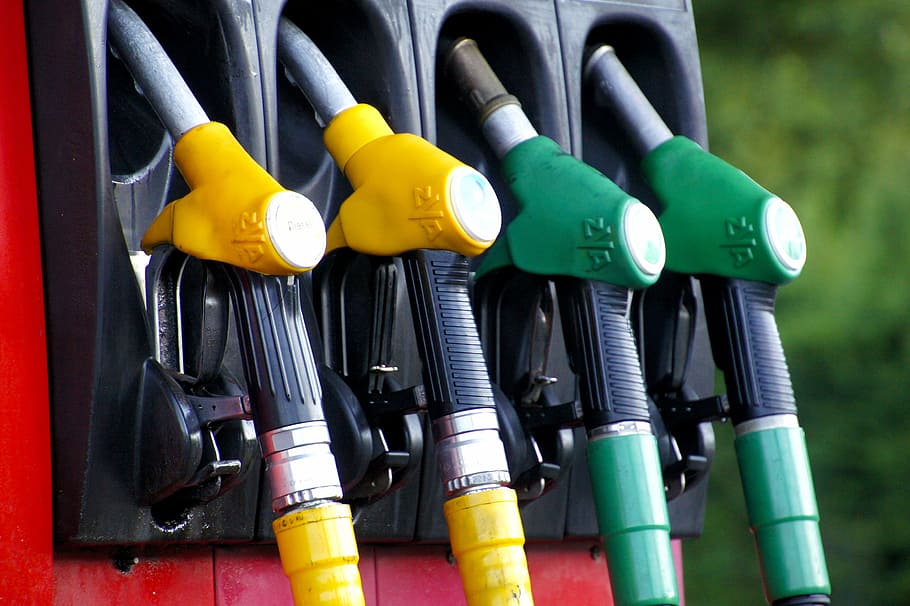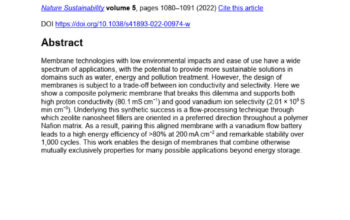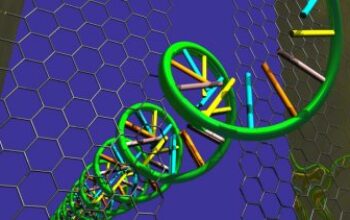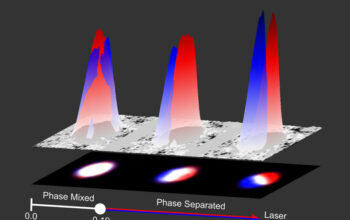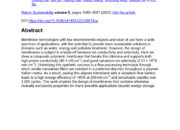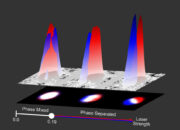In recent years, a paradigm shift in the renewable energy discourse has led to an intriguing exploration of the versatility of fuel cells, particularly those that utilize alcohol as a primary fuel source. This development ignites curiosity, not only due to its technical implications but also in reflecting broader societal desires for sustainable energy solutions. Why is there an increasing fascination with alcohol-based fuel cells? The answer lies in an amalgam of environmental prerequisites, economic incentives, and technological advancements.
Fuel cells function by converting chemical energy directly into electrical energy through electrochemical reactions. This technology has long been heralded in discussions surrounding clean energy—a realm in which hydrogen fuel cells have occupied a primary spotlight. However, the conversion of alcohols, such as methanol and ethanol, represents a pivotal expansion of this technology. These alcohol-based fuel cells, known as direct alcohol fuel cells (DAFCs), offer several benefits that render them attractive in both research and application.
One of the most striking advantages of alcohol fuel cells lies in their higher energy density compared to hydrogen. For example, methanol boasts approximately 6.1 megajoules per liter, while hydrogen gas is significantly less dense. This characteristic permits easier storage and transportation, as liquid fuels are less cumbersome than gaseous fuels. The insights gained by examining these physical properties highlight a common observation: the pursuit for efficiency often leads us to materials and concepts that have been underestimated or overlooked.
Moreover, the production of alcohol as a fuel source is relatively more feasible and environmentally amicable compared to hydrogen synthesis—an aspect that underscores our fascination with these technologies. Ethanol, for instance, can be derived from the fermentation of sugar crops or cellulosic biomass, harnessing photosynthetic processes. This renewable character aligns seamlessly with contemporary efforts towards decarbonizing energy systems and mitigating dependency on fossil fuels. As society grapples with climate change, the opportunity to utilize organic materials as fuel becomes increasingly appealing.
Further delving into the technical aspects, DAFCs exhibit a unique advantage in terms of operating at relatively low temperatures compared to their hydrogen counterparts. This operational ease translates into a notably quicker start-up time and enhanced overall system efficiency. With pollution control being an essential contemporary issue, the lower emissions profile of alcohol fuel cells complements modern environmental goals. Carbon dioxide emissions from DAFCs can be significantly reduced, especially when sourced from biomass, thus resonating with the global imperative for climate action.
The fascination with alcohol fuel cells also extends into the realm of versatility. Ethanol and methanol can seamlessly integrate into pre-existing fueling infrastructures while providing a viable alternative for transportation applications. Both urban and rural environments can benefit from the implementation of these systems, which can power vehicles, backup generators, and portable electronics, thereby exhibiting an evolutionary trajectory within energy distribution networks.
As research progresses, various advancements are continuously enhancing the efficiency and durability of DAFCs. Catalyst technology is a focal point in this area, where optimization is crucial for improving the performance of these fuel cells. The advent of nanomaterials, for instance, holds promise for elevating catalytic efficiency, resulting in lower costs and augmented energy outputs. This intersection of materials science and engineering propels the field forward, fostering a culture of innovation. Herein lies a deeper reason for fascination: the confluence of interdisciplinary collaboration signifies a growing complexity and pursuit of sophistication in solving energy crises.
However, the discourse on alcohol fuel cells isn’t devoid of challenges. One ongoing concern pertains to the efficiency of alcohol oxidation, which typically occurs at a slower rate than hydrogen oxidation. Furthermore, cross-over effects, where alcohol molecules traverse through the membrane inappropriately, lead to performance inefficiencies. These barriers suggest that while the allure of alcohol-based fuel cells is compelling, substantial research and development efforts are required to reach their full potential.
In addressing public perception, the cultural associations with alcohol—frequently framed through lenses of conviviality and social gatherings—add an ironic yet compelling layer to the narrative. This juxtaposition positions alcohol not merely as a recreational substance but as a potential savior in the impending energy crisis. Society’s fascination may also stem from a psychological comfort in leveraging familiar materials in new, innovative ways. It accentuates an innate human tendency: to find refuge within the familiar, yet explore its uncharted capabilities.
In conclusion, the movement towards alcohol-based fuel cells encapsulates a compelling intersection of ecological necessity and technological innovation. This pursuit transcends mere scientific curiosity; it embodies a quest for sustainable solutions that address the intricate dance of social, economic, and environmental dynamics guiding contemporary energy policy. The melding of practicality with the potential for groundbreaking research fuels a narrative that is not only significant but essential in addressing pressing global challenges. As we advance towards a more sustainable future, exploring and understanding the implications of alcohol fuel cells stands as a testament to human ingenuity and the relentless pursuit of progress.
